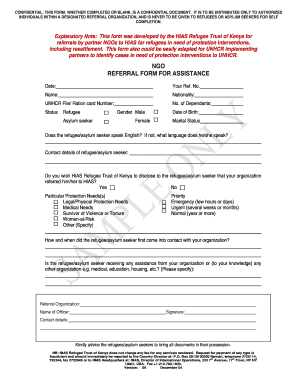5 Steps to File Resettlement Paperwork Fast

Moving to a new country for resettlement can be a daunting task, but with the right approach, you can streamline the process of filing your resettlement paperwork efficiently. Whether you are moving for work, family, or due to humanitarian reasons, understanding the steps involved and preparing adequately can significantly reduce the stress associated with relocation.
Step 1: Understand the Requirements

Before you even start filling out forms, it’s crucial to:
- Identify the type of resettlement you are eligible for.
- Review the specific documentation and eligibility criteria for your situation.
- Research the host country’s requirements regarding visas, health checks, and any financial or cultural integration programs.
📝 Note: Requirements can vary greatly from one country to another, so make sure to visit official government websites or authorized agents for the most accurate information.
Step 2: Gather Necessary Documentation

Organize all required documents:
- Passports or national ID cards for all family members.
- Birth certificates, marriage certificates, and other relationship proof documents.
- Previous visas, travel history, or refugee status documentation if applicable.
- Police clearance certificates from your current country of residence.
- Health records and medical certificates, including any necessary vaccinations.
Step 3: Fill Out Forms Correctly

Here’s how you can ensure your applications are filled out correctly:
- Use the latest versions of forms available on the official websites to avoid using outdated documents.
- Read instructions carefully, filling in all fields accurately. Incomplete forms can lead to delays or rejections.
- Be precise with details like names, dates, and identification numbers.
- Double-check for spelling errors or missing attachments.
- Consider using translation services for documents not in the host country’s language.
🚫 Note: Errors in forms or missing documents are the most common reasons for delays in the resettlement process.
Step 4: Pay Fees and Secure Appointments

The next step involves financial and logistical planning:
- Calculate all potential fees associated with visas, translations, and other required processes.
- Make payments via approved channels; keep receipts as proof.
- Book biometric appointments or interviews well in advance.
- Plan for travel if an in-person appointment is necessary.
| Fee Type | Approximate Cost |
|---|---|
| Visa Application Fee | $100 - $1500 |
| Biometric Fee | $85 - $150 |
| Health Check | $100 - $500 |
| Translation Services | $50 - $200 per document |

Step 5: Follow-Up and Track Your Application

After submitting your documents, keep these steps in mind:
- Keep a record of all submitted documents and receipts.
- Use online tracking systems or contact centers to monitor application progress.
- Respond promptly to any requests for additional information or interviews.
- Be prepared for potential delays and plan accordingly.
In wrapping up, streamlining your resettlement paperwork involves understanding the requirements, gathering necessary documentation, correctly filling out forms, securing appointments, and diligently following up on your application. Each step, when done with attention to detail, can mitigate the usual challenges associated with moving to a new country. Remember, patience and organization are key as you navigate through this transformative journey towards resettlement.
What if I don’t meet the eligibility criteria for resettlement?

+
If you do not meet the criteria for resettlement, you might explore other visa options or consider humanitarian aid organizations that can help with asylum or refugee status applications.
Can I apply for resettlement if I am already in the host country?

+
Yes, some countries allow in-country applications for resettlement, especially under humanitarian programs or family reunification schemes. Check the specific country’s policies.
How long does the resettlement process typically take?

+
The duration varies significantly based on your situation, the country of resettlement, and the efficiency of the immigration services. Generally, it can take anywhere from a few months to several years.